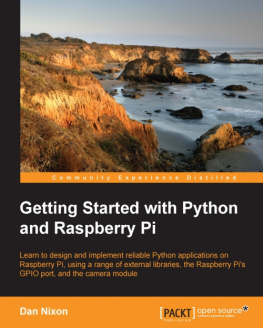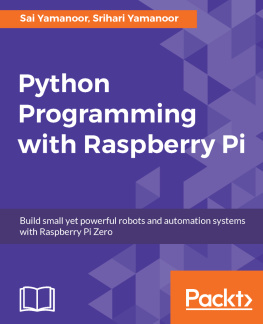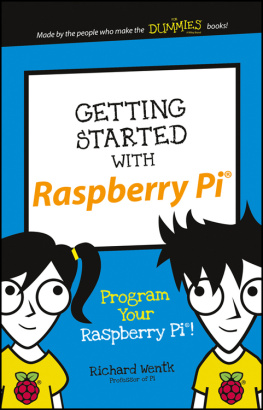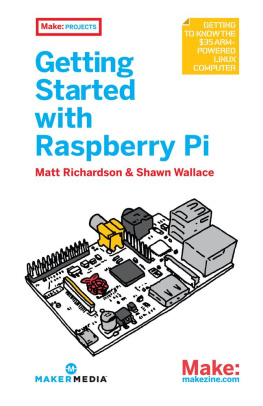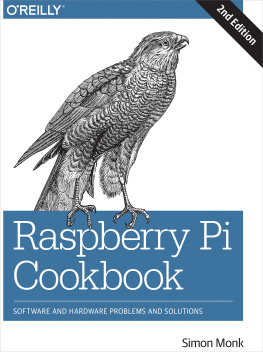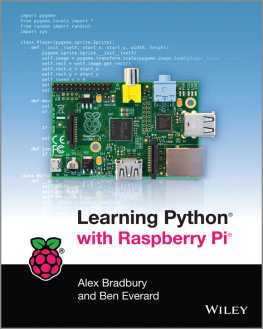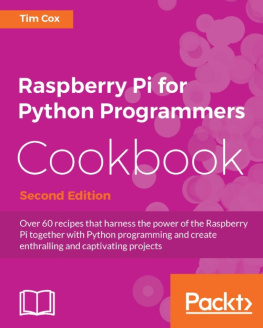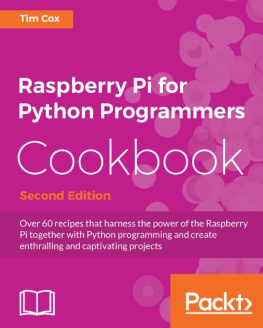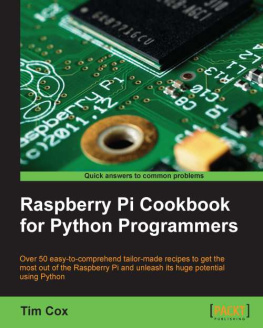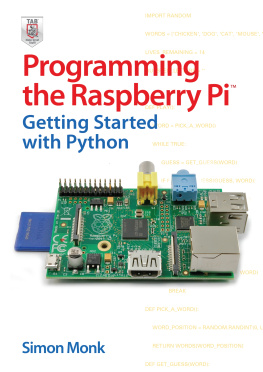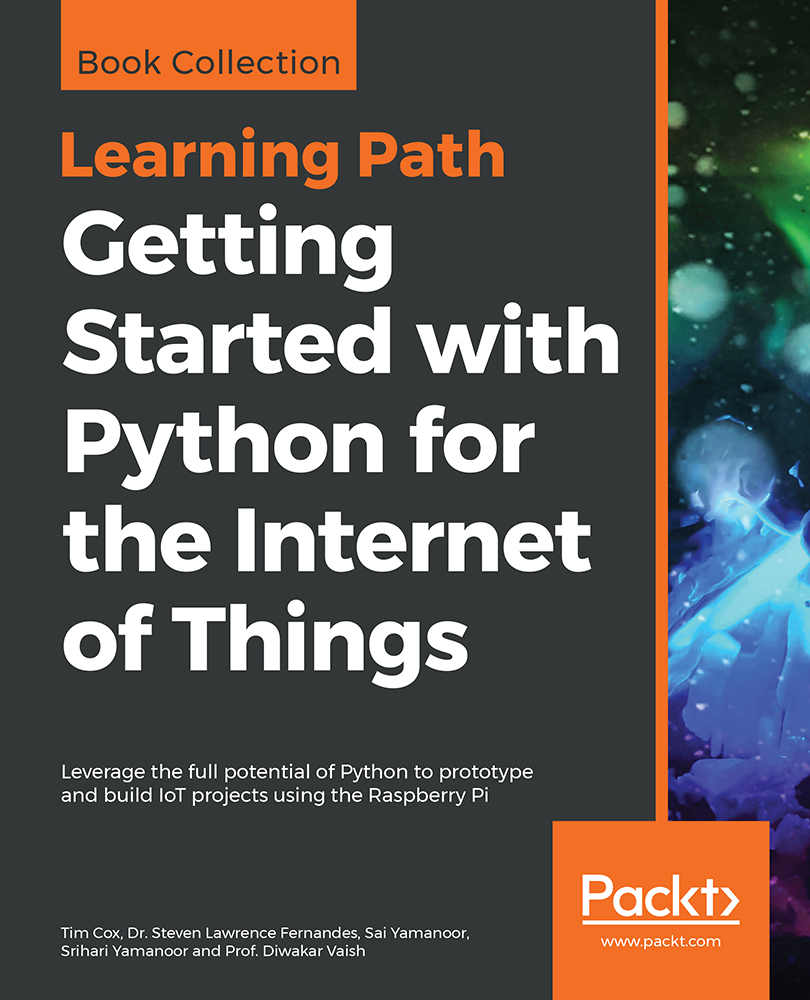Prof. Diwakar Vaish - Getting Started with Python for the Internet of Things
Here you can read online Prof. Diwakar Vaish - Getting Started with Python for the Internet of Things full text of the book (entire story) in english for free. Download pdf and epub, get meaning, cover and reviews about this ebook. year: 2019, publisher: Packt Publishing, genre: Home and family. Description of the work, (preface) as well as reviews are available. Best literature library LitArk.com created for fans of good reading and offers a wide selection of genres:
Romance novel
Science fiction
Adventure
Detective
Science
History
Home and family
Prose
Art
Politics
Computer
Non-fiction
Religion
Business
Children
Humor
Choose a favorite category and find really read worthwhile books. Enjoy immersion in the world of imagination, feel the emotions of the characters or learn something new for yourself, make an fascinating discovery.

- Book:Getting Started with Python for the Internet of Things
- Author:
- Publisher:Packt Publishing
- Genre:
- Year:2019
- Rating:5 / 5
- Favourites:Add to favourites
- Your mark:
Getting Started with Python for the Internet of Things: summary, description and annotation
We offer to read an annotation, description, summary or preface (depends on what the author of the book "Getting Started with Python for the Internet of Things" wrote himself). If you haven't found the necessary information about the book — write in the comments, we will try to find it.
Build clever, collaborative, and powerful automation systems with the Raspberry Pi and Python.
Key Features- Create your own Pi-Rover or Pi-Hexipod robots
- Develop practical applications in Python using Raspberry Pi
- Build your own Jarvis, a highly advanced computerized AI
This Learning Path takes you on a journey in the world of robotics and teaches you all that you can achieve with Raspberry Pi and Python.
It teaches you to harness the power of Python with the Raspberry Pi 3 and the Raspberry Pi zero to build superlative automation systems that can transform your business. You will learn to create text classifiers, predict sentiment in words, and develop applications with the Tkinter library. Things will get more interesting when you build a human face detection and recognition system and a home automation system in Python, where different appliances are controlled using the Raspberry Pi. With such diverse robotics projects, youll grasp the basics of robotics and its functions, and understand the integration of robotics with the IoT environment.
By the end of this Learning Path, you will have covered everything from configuring a robotic controller, to creating a self-driven robotic vehicle using Python.
- Raspberry Pi 3 Cookbook for Python Programmers - Third Edition by Tim Cox, Dr. Steven Lawrence Fernandes
- Python Programming with Raspberry Pi by Sai Yamanoor, Srihari Yamanoor
- Python Robotics Projects by Prof. Diwakar Vaish
- Build text classifiers and predict sentiment in words with the Tkinter library
- Develop human face detection and recognition systems
- Create a neural network module for optical character recognition
- Build a mobile robot using the Raspberry Pi as a controller
- Understand how to interface sensors, actuators, and LED displays work
- Apply machine learning techniques to your models
- Interface your robots with Bluetooth
This Learning Path is specially designed for Python developers who want to take their skills to the next level by creating robots that can enhance peoples lives. Familiarity with Python and electronics will aid understanding the concepts in this Learning Path.
Downloading the example code for this book You can download the example code files for all Packt books you have purchased from your account at http://www.PacktPub.com. If you purchased this book elsewhere, you can visit http://www.PacktPub.com/support and register to have the files e-mailed directly to you.
Prof. Diwakar Vaish: author's other books
Who wrote Getting Started with Python for the Internet of Things? Find out the surname, the name of the author of the book and a list of all author's works by series.

